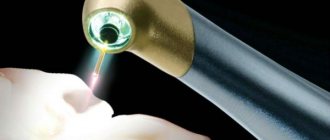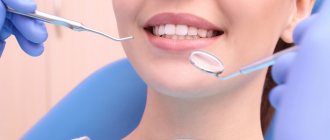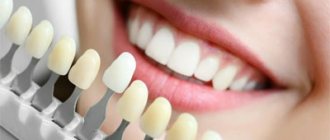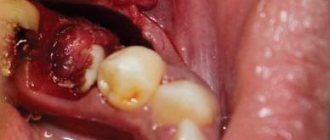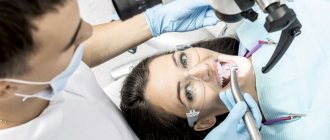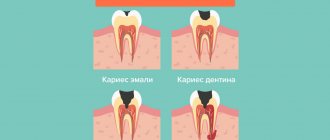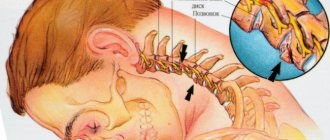Modern medicine has specialized technologies that allow the patient to avoid discomfort after septoplasty and breathe through the nose.
Author:
- Gadzhiev Kamran Rafikovich
otolaryngologist, rhinosurgeon
4.42 (Votes: 26)
- Nose pain
The most common pathology of the ENT organs is a deviated nasal septum. No one thinks that even the slightest curvature can cause serious diseases, such as sinusitis, nasal polyps. Why is this happening? When the ENT organs are healthy, only clean and warm air enters the lower respiratory tract, since it is warmed and disinfected in the nasal cavity. With a deviated nasal septum, these functions are disrupted due to the fact that the air stream hits the curvature of the septum.
Correction of a deviated nasal septum is called septoplasty. This operation helps the patient return to normal and natural breathing. But, unfortunately, many patients try to avoid it and continue to live with a deviated septum, which leads to complications in the future. What worries people before surgery:
- How to breathe through your nose after surgery?
- will tampons be placed in the nose?
- How long will I need to stay in the hospital after the operation?
These questions stop the patient from making the decision to undergo surgery.
How is rehabilitation after septoplasty?
With the development of technology, septoplasty has ceased to be uncomfortable. The operation begins with the patient being given anesthesia, then the doctor uses an endoscope, through a small incision, to enter between the layers of the mucous membrane and straighten the septum.
During the rehabilitation period, technologies were also created that allow the patient to avoid unpleasant sensations and breathe through the nose. Intranasal septal splints according to Reiter or splints were created. They are made of soft silicone, as it does not cause any harm to the nasal cavity and is painlessly removed from it. The splints have a seven-sided shape, which completely follows the shape of the nasal septum at the site of the operation. The essence of splints is that they keep the septum in the midline. After the operation, while the patient is under anesthesia, a silicone splint is sewn on.
Splints come in different modifications. Depending on the shape of the nose, they can be either large or small. A tube can also be inserted between the silicone of the splint, through which the patient can breathe immediately after the operation. The septal splint stays in the nose for about 5-7 days, during which time the nasal septum takes its position.
Main reasons
In fact, sinusitis can act as a complication, but only if, before implantation, bone tissue was built up using a sinus lift. If inflammation of the maxillary sinuses develops for the following reasons:
- During the operation, the sinus was damaged, which led to impaired ventilation and, as a consequence, an inflammatory process.
- The bone tissue augmentation procedure was not performed under perfectly sterile conditions.
- Incorrect implant size.
- Getting pieces of artificial material close to the paranasal sinuses.
If sinusitis occurs within a week from the moment of implantation, with a 98% probability we are talking about a complication. There is a low percentage that the disease is caused by a decrease in immunity and is not directly related to the installation of dental implants.
Septal splints
Recently, septal splints or intranasal splints have become an integral part of operations on the nasal septum. For septoplasty, rhinoseptoplasty and closure of perforations of the nasal septum, the final stage of the operation is the installation of septal splints on both sides of the nasal septum.
The reason splints are so popular among surgeons is a number of advantages that improve the outcome of the operation, reduce the risks of postoperative complications and speed up the patient’s recovery.
The advantages of septal splints are reflected in the table
| Traditional septoplasty method | Septoplasty using septal splints | |
| Nasal discharge | After the operation, the mucous discharge in the nose and the remaining blood dry up. Crusts form in the nasal cavity, which adhere to the nasal mucosa and are difficult to remove. They also impair breathing and cause severe discomfort in the patient in the postoperative period. | Septal splints cover the entire mucous membrane of the nasal septum and prevent the formation of crusts on the mucous membrane of the nasal septum. And due to the fact that they are made of silicone, all the pathological contents in the nose do not find adhesion and are easily washed off with a nasal shower. |
| Swelling of the mucous membrane | After surgery, the nasal mucosa begins to swell and close the nasal passages due to surgical exposure. Because of this, the patient cannot breathe through his nose, he has to breathe through his mouth, and thus develops dry mouth, etc. | Silicone splints prevent the nasal mucosa from swelling and closing, as they are very flexible and quite elastic. And thanks to special channels, the patient does not have breathing problems after the operation. |
| Adhesions in the nose | Often, upon a second visit to the doctor, the patient is informed about the formation of adhesions in the nose (synechia). The reason for adhesions in the nose is that the mucous membrane of the nasal septum, due to swelling, begins to come into contact with the mucous membrane of the lateral (opposite) wall of the nose, as a result of which they stick together, and the patient faces additional surgery. | Being a barrier between mucous membranes, splints help to avoid this complication. |
| Re-displacement of the septum after surgery | High risk of displacement. | Splints, like a plaster cast, applied to a broken limb, keep the nasal septum strictly in the midline and give it additional support. Thus, splints help to avoid such complications as a secondary displaced nasal septum. |
| Nose bleed | Frequent nosebleeds. | By holding the nasal septum tightly in the midline, the splints compress the vessels and blood does not accumulate between the layers of the nasal septum mucosa. Thus, frequent complications such as nosebleeds or hematoma of the nasal septum do not occur with installed splints. |
| Tamponation | Mandatory packing. Tampons in the nose create additional discomfort. | It is possible to avoid packing of the nasal cavity. Due to this, the rehabilitation period for the patient is easier. But it should still be remembered that only the surgeon decides whether to pack the nasal cavity or not, depending on the circumstances after installing the splints. |
A runny nose may be a sign of sinusitis.
Since the sinus lift procedure itself is a serious surgical procedure, various complications may develop after it, as with any operation. There is no need to be afraid of this. One of the most common phenomena after this bone grafting is the development of a runny nose in patients. People simply do not understand how dental treatment and nasal congestion can be connected and often do not pay attention to it.
A runny nose after such a manipulation can be either a harmless and temporary inflammation of the nasal mucosa, or a more serious disease (the development of sinusitis), so it is imperative to notify the attending physician about its presence so that he can correctly select or adjust further treatment and recovery patient. For a better understanding, it is necessary to understand the reasons for the appearance of such a symptom as a runny nose after a sinus lift.
Postoperative period
Nose pain
Often in the postoperative period, patients experience pain in the nose. This is due both to the surgical procedure itself and to the presence of tampons in the nose. If the pain is severe, the doctor may prescribe opioid-containing narcotic painkillers such as tramadol, promedol. Most often, patients themselves refuse opioid analgesics. In this case, doctors use non-steroidal anti-inflammatory drugs: ketorol, diclofenac, analgin. However, a contraindication to these drugs is the deterioration of blood clotting and an increased risk of postoperative bleeding, so doctors do not recommend using these drugs frequently, especially in the first days after surgery.
To reduce pain after septoplasty, it is recommended to raise the head of the bed if the patient is undergoing rehabilitation in a hospital. At home, you need to lie with your head elevated, using 2-3 pillows. It is also recommended to apply ice to the bridge of the nose and forehead for 5-10 minutes 2-3 times a day.
In the postoperative period, you should not touch your nose, especially avoid pressing on the tip of the nose. This can cause severe pain and will cause poor tissue healing in the surgical area. Also, trauma to the nose after septoplasty often causes a shift of the nasal septum to the side.
Antibiotics
During the rehabilitation period, antibiotics are prescribed to reduce the risk of infection. Usually these are penicillin antibiotics. It is necessary to strictly adhere to the duration and dose of antibiotics prescribed by the doctor.
Vasoconstrictors and nasal douche
The next day after removing the tampons, you will need to use vasoconstrictor nasal drops, for example, xylometazoline, Nazivin and saline solutions for the nose (Aqua-Lor, Dolphin). Vasoconstrictors are prescribed to reduce swelling in the nose and widen the nasal passages. This improves nasal patency during nasal shower with saline solutions. Saline solutions wash away mucus, congealed blood, and crusts from the nose, speeding up recovery. On average, vasoconstrictor drops and nasal douche are prescribed for 5-7 days.
General recommendations for the patient during the postoperative period
The postoperative period lasts for 3 weeks after surgery. At this time, the main thing is to speed up the metabolism in the body, which will speed up recovery. To do this, the patient is prescribed to drink plenty of fluids - up to 3 liters of fluid per day, and moderate walking - 3-4 hours during the day. However, you should not engage in physical exercise or strain yourself - physical activity is contraindicated during the entire rehabilitation period.
Rhinoplasty: answering questions
Rhinoplasty is one of the most popular plastic surgeries. And one of the first in terms of the number of questions asked. We have collected questions for the week from the social networks of plastic surgeons at the GALAXY Beauty Institute and are sharing with you the answers of our doctors.
How long does swelling last after rhinoplasty?
Everything is individual. Noticeable swelling and bruising disappear within 2-3 weeks. To speed up the rehabilitation process, the GALAXY Beauty Institute offers three free procedures or a paid extended rehabilitation course. (Staisupov V.Yu.)
How to care for your nose after surgery?
Surgeon E.A. Siverina recommends rinsing your nose with saline solution. Each nostril is irrigated separately, the second at this moment is slightly covered with the thumb, the wing of the nose cannot be pressed. The remains of the drug are blown out with an open mouth. The procedure is repeated at least three times a day for 3-4 weeks. To soften the mucous membrane and prevent the formation of crusts after treatment, peach oil is instilled into the nose. If correction of the nasal septum was performed simultaneously with rhinoplasty, rinsing is not performed.
Will the bridge of the nose become wider if the hump is removed?
No, the back width will remain the same because the bones move after the hump is removed. (Staisupov V.Yu.)
Can rhinoplasty be done before the age of 18?
At the GALAXY Beauty Institute, plastic surgery is performed only on adult patients. However, for medical reasons, rhinoplasty can be performed up to 18 years of age. (Staisupov V.Yu.)
Are there any restrictions for ladies over 60?
If the condition of the body allows for surgery, rhinoplasty is not contraindicated. Rehabilitation may take longer because tissues heal less well at this age. (Staisupov V.Yu.)
Is it possible to get your nose pierced after rhinoplasty?
Yes, you can. (Staisupov V.Yu.)
Do I need to wear compression stockings during rhinoplasty and why?
The nose and stockings are not directly related. During the operation, you will spend some time without moving under anesthesia. For diseases of the veins of the lower extremities, in particular varicose veins, thromboembolism prevention is required. If you need such stockings, the GALAXY Beauty Institute will provide them. (Staisupov V.Yu.)
Can I take vitamin C before and after rhinoplasty?
Yes, you can. (Staisupov V.Yu.)
What anesthesia is used for rhinoplasty?
We perform rhinoplasty only under anesthesia (general anesthesia) in order to minimize all discomfort for the patient. (Staisupov V.Yu.)
Is it true that during rhinoplasty the bone in the hump area is broken?
To get rid of the hump, we use an osteotome - a tool for carefully cutting cartilage and bone. (Staisupov V.Yu.)
How long does the operation take?
On average 1.5-2 hours, depending on the complexity of the plastic surgery. We try to avoid unforeseen situations and uncertainty; if necessary, we prescribe additional examinations so that the operation plan does not change during the intervention. (Staisupov V.Yu.)
How long after rhinoplasty can I clean my face (including my nose)?
Ultrasonic cleaning is allowed after 3 weeks, mechanical cleaning - no earlier than after 2 months. (Siverina E.A.)
How will my rehabilitation proceed if I am from another city?
On the first day you will be in the clinic. The cost of a day in the ward is included in the cost of the operation. You need to stay in St. Petersburg for 7-10 days. At first there is a risk of bleeding, sometimes quite severe. In addition, it is better for the attending physician to remove the plaster cast. Removal occurs on 7-10 days. After this you can go home. If the tissue is healing normally, follow-up examinations will be required at 3, 6 and 12 months. At other times, consultations are possible via messengers or Instagram. (Siverina E.A., Staisupov V.Yu.)
Is it possible to correct only the tip of the nose?
Theoretically, yes, if you really only need to fix the tip of the nose. This happens rarely. If the bridge of the nose is wide or there is a hump, limited plastic surgery will make them more massive. Harmony and correct proportions are important. (Siverina E.A.)
How can you see the result of rhinoplasty before surgery?
If desired, we carry out computer modeling, where we correct the nose in the photo according to your wishes. The simulation result is approximate and does not always coincide 100% with the outcome of the operation. (Siverina E.A.)
Will the tip of the nose droop after rhinoplasty?
Over the years, the tip drops a little, just like a nose without plastic surgery. (Safonova L.N.)
How many days does your nose hurt after surgery?
Most patients experience no pain, only discomfort from nasal congestion. (Moshkalova A.L.)
Is it possible to have a nose job during your period?
Blood loss during the operation is insignificant, but rhinoplasty is not performed in the first 3 days of menstruation. (Siverina E.A.)
Will I have problems with passport control after rhinoplasty?
Yes, problems may arise if the shape of the nose is adjusted significantly. It is better to take with you a certificate of the intervention performed or make a passport with a new photo. (Siverina E.A.)
Do enlarged pores remain on the nose after surgery?
Plastic surgery does not affect the structure of the skin of the nose. Cosmetologists will help you get rid of enlarged pores. (Cohen I.A.)
What are the contraindications for rhinoplasty?
A healthy person does not have them. In general, the list is the same for all plastic surgeries. (Cohen A.N.)
How long after a nose job can you kiss?
In 2-3 weeks. If you touch your nose before it heals, it will be very painful. (Staisupov V.Yu.)
Where does excess skin from the tip go when the nose is shortened?
It all depends on the thickness of the skin and the degree of shortening. The skin contracts. In some cases, excess skin is removed by a surgeon. (Staisupov V.Yu.)
What massage do you recommend after nose job?
It is better to refrain from massaging the nose after rhinoplasty so as not to displace its structures. (Staisupov V.Yu.)
Is it possible to have a nose job in winter?
Yes, you can. The operation is carried out year-round. (Staisupov V.Yu.)
How long after a nose job can I go to the solarium?
Not earlier than 5 weeks after surgery. Ultraviolet irradiation and heat dilate blood vessels and can cause bleeding. (Staisupov V.Yu.)
Is thrombophilia a contraindication for rhinoplasty?
Rhinoplasty can be performed for thrombophilia if blood test results are good and only with the permission of a hematologist. (Staisupov V.Yu.)
How much time should pass between rhinoseptoplasty and installation of braces?
The operation can be done even the next day if we are talking about standard bite correction. In case of severe disorders, consultation with an oral and maxillofacial surgeon may be required. (Staisupov V.Yu.)
If adhesions form in the nose after surgery, can you see them yourself?
It is very difficult to see adhesions on your own; if you are worried, consult an ENT specialist. (Staisupov V.Yu.)
What medications are contraindicated before rhinoplasty? Can I take antiviral medications?
Any medications are allowed, except blood thinners (aspirin and its analogues). (Staisupov V.Yu.)
How long after catching a cold and taking antibiotics can I get a nose job?
It takes 10-14 days for the body to recover. After this, the operation is allowed. (Staisupov V.Yu.)
Is it possible to have rhinoplasty in summer? If yes, what precautions should be taken?
The operation is carried out at any time of the year. In the summer, you need to protect your face from the sun: use protective creams and wear a hat. Excessive heat to the skin and ultraviolet light can cause bleeding. (Staisupov V.Yu.)
Is it possible to do rhinoplasty during the healing stage of dental implants?
Yes, it is allowed. (Staisupov V.Yu.)
Is it true that you can’t get pregnant for a year after rhinoplasty? Why?
It is better to refrain from pregnancy for six months to a year after surgery. Bearing a child is a serious process, accompanied by changes in hormonal levels and water-salt metabolism. Many women experience swelling. Rhinoplasty will not affect the pregnancy itself, but the result of plastic surgery may become slightly worse. (Staisupov V.Yu.)
How to recognize pathology
Symptoms of otolaryngological disease are not difficult to recognize. The following symptoms are clearly expressed:
- First, there is a general deterioration in health, lack of appetite.
- There is a headache, which increases with bending and sudden movements.
- Nasal congestion.
- Discharge of whitish thick mucus with a green tint from the nose.
- When palpated in the sinus area, painful sensations are observed.
If you have the described symptoms, you should consult a doctor as soon as possible. Otherwise, sinusitis can become chronic and lead to a number of other problems.
